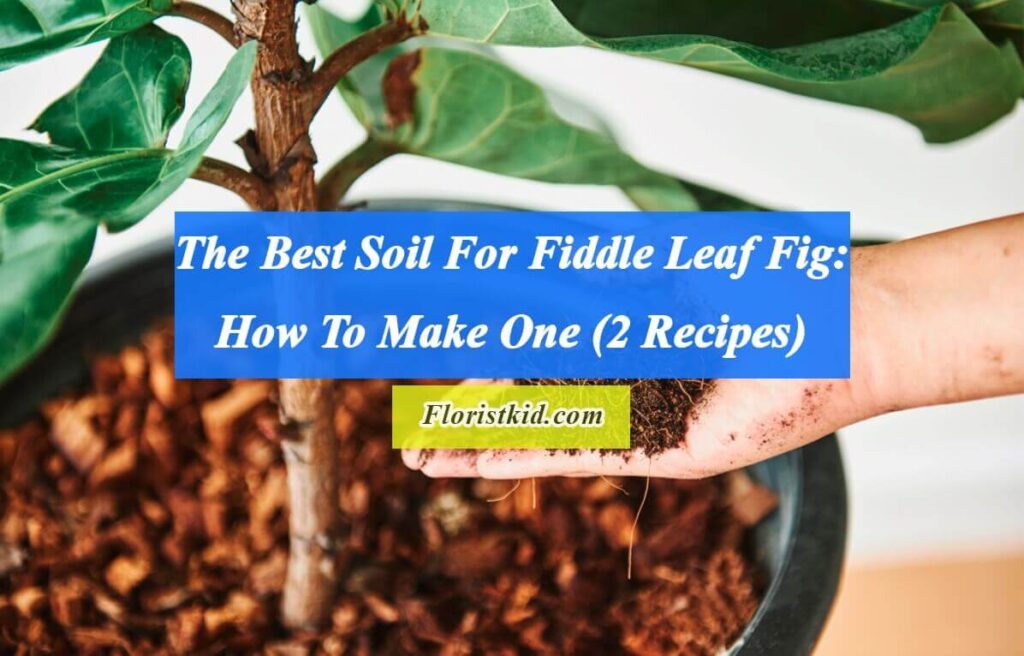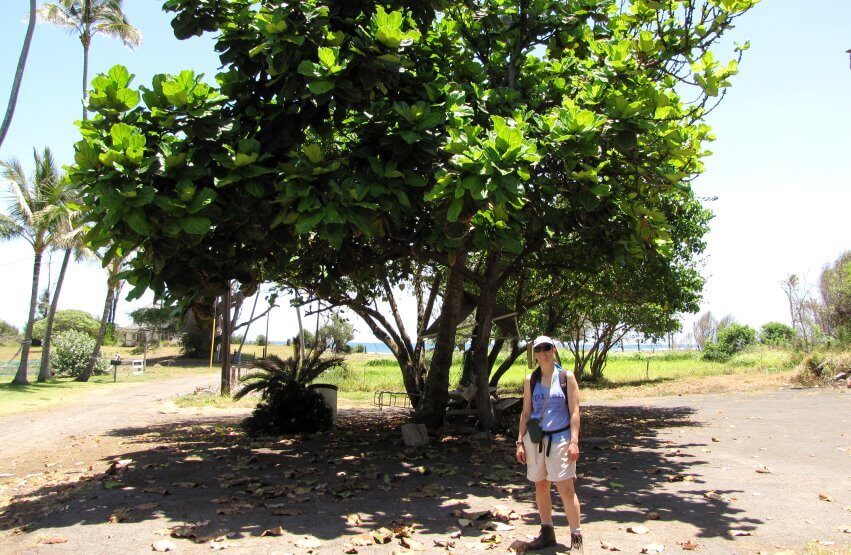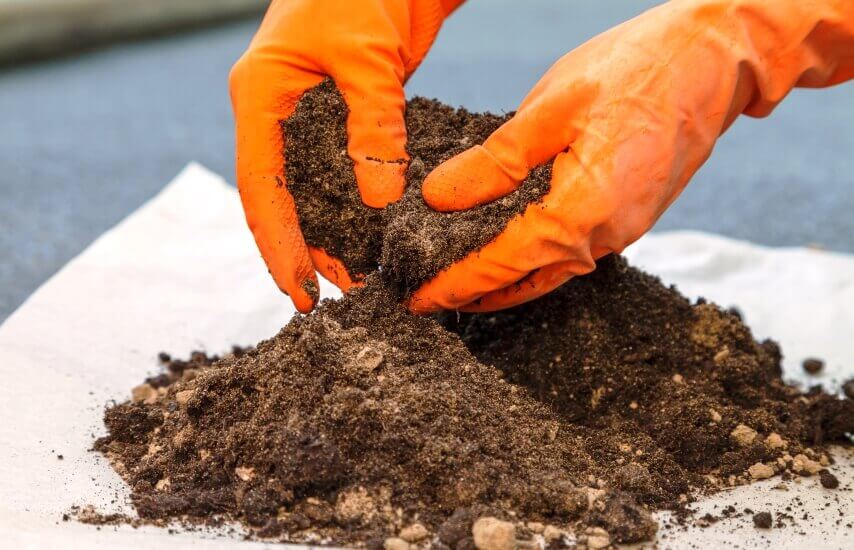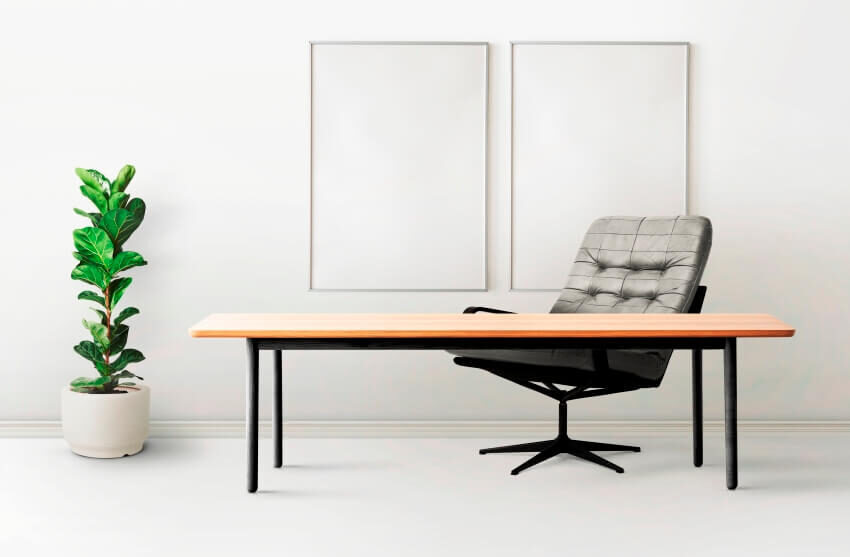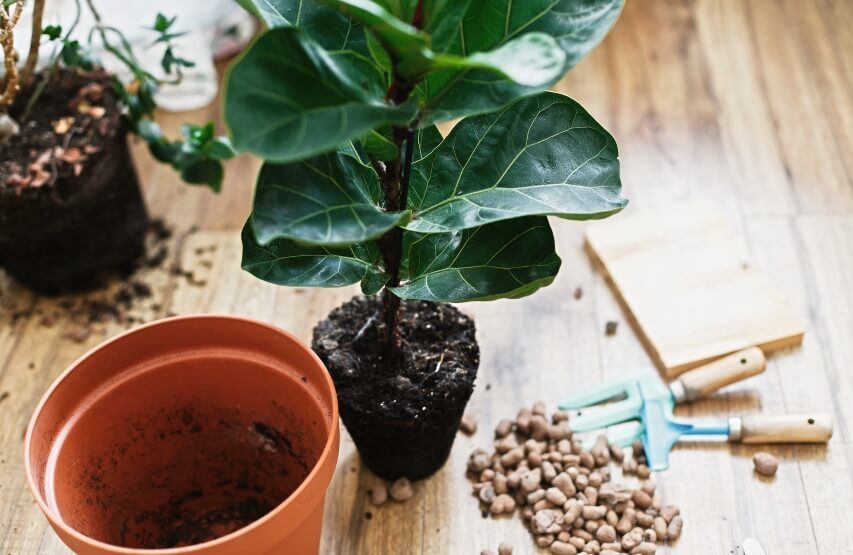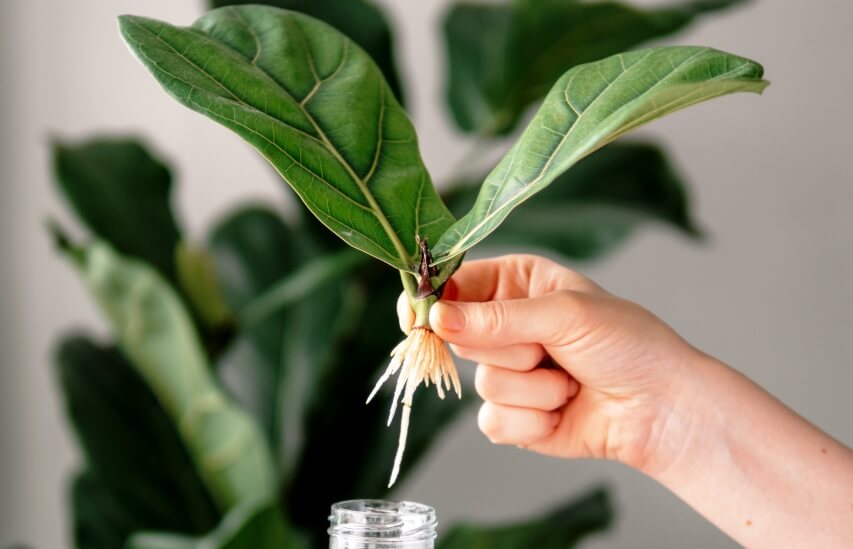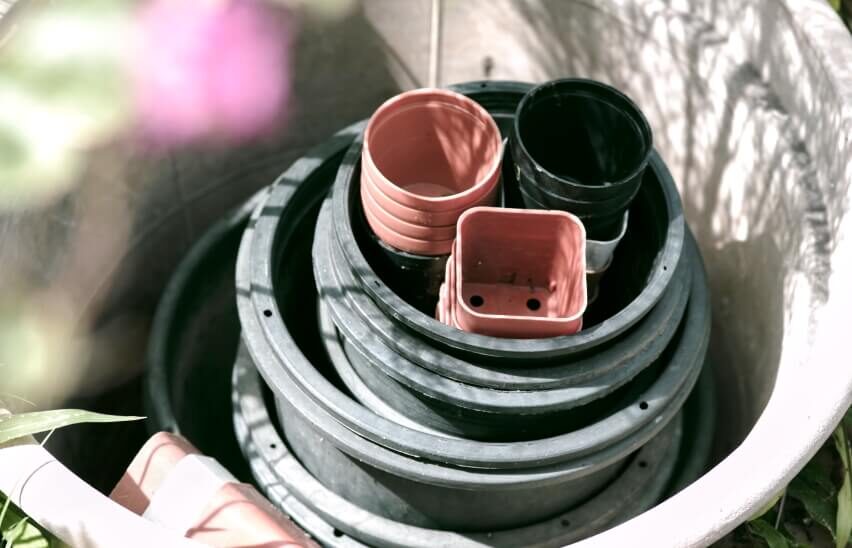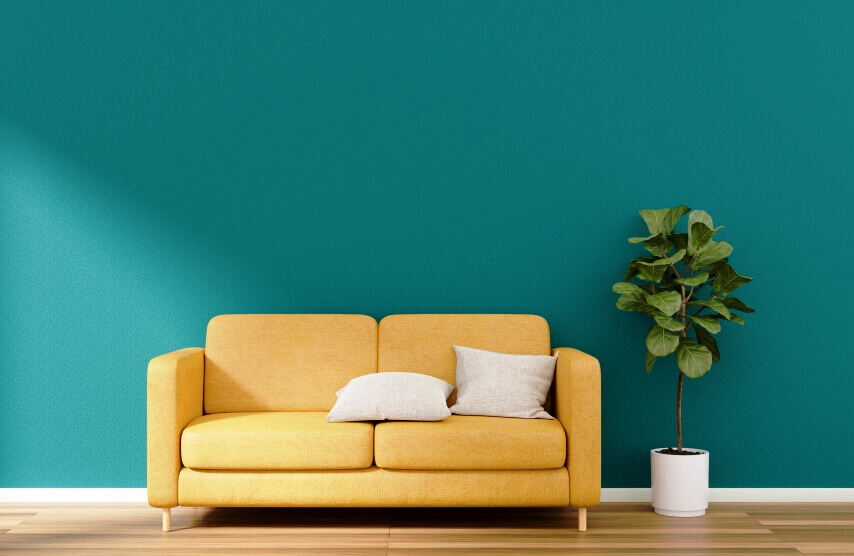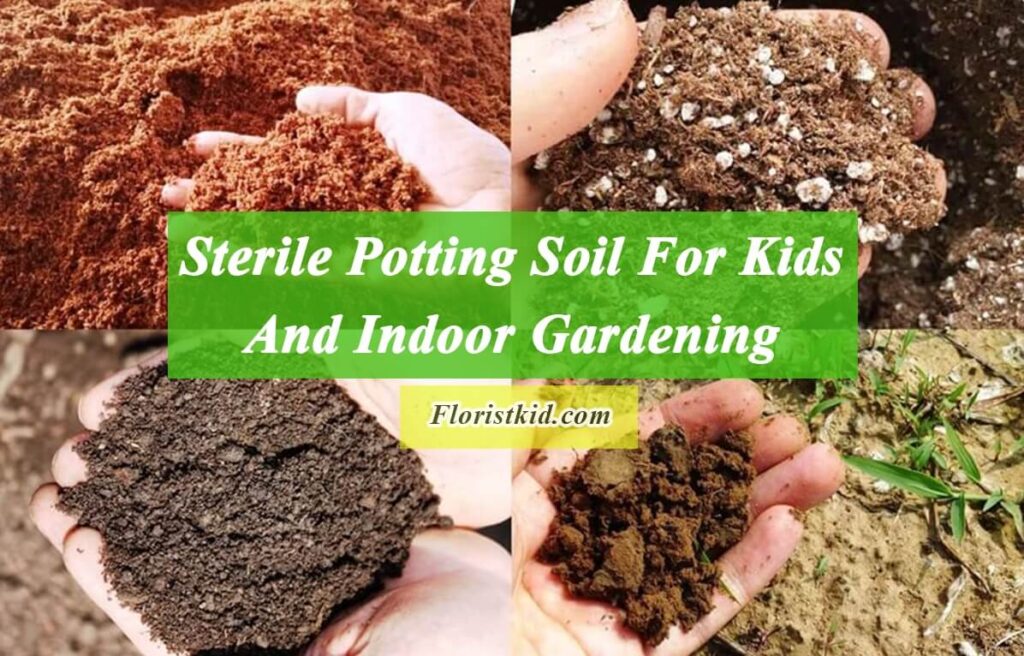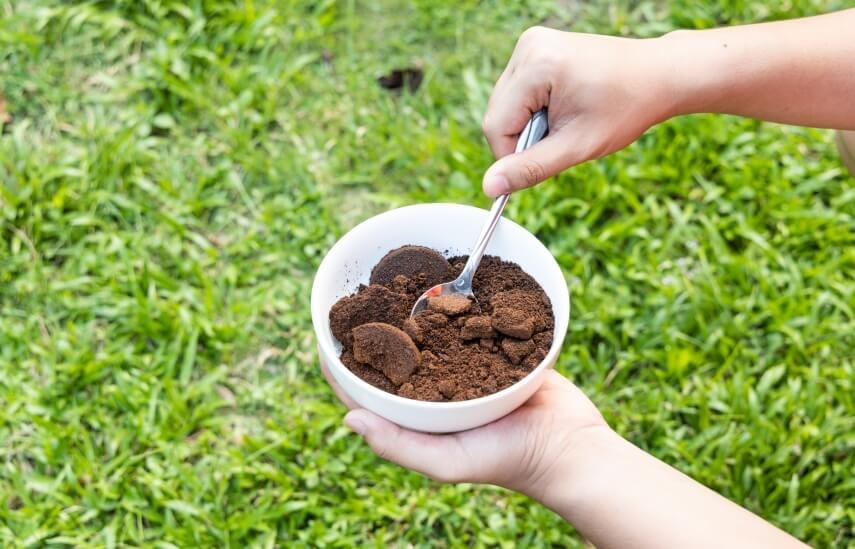Fiddle Leaf Figs (Ficus lyrata) are renowned for their elegance, beauty, and, naturally, picky disposition. Although they are often simple maintenance plants, success in their upkeep depends on keeping them in the right conditions. The soil or medium in which the Fiddle Leaf Fig is planted, plays a vital role in how well your plant grows.
This article will explain the variables influencing the characteristics of soil mixtures as well as how to select or create the best soil for Fiddle Leaf Fig plants.
If you are interested in this topic , you can also read
<<Best soil for Pothos Plant>> and <<Best Soil For Monstera Plant>>articles.
Fiddle leaf fig tree – source: Forest and Kim Starr
About fiddle leaf fig
The fiddle leaf fig is a common indoor potted plant frequently used in styling and interior design. It grows to a height of around 2-3 meters, or till it touches the ceiling and is used as a huge specimen plant. These Large spreading evergreen trees can grow up to 15 meters tall in their habitat [1].
The tropical regions of Central and West Africa are where fiddle leaf figs naturally grow in lowland rainforests. They bear long, green figs on mature trees, typically covered by thick, coarse leaves. In most tropical and warm-temperate climates, the fiddle leaf fig grows best in partial shade; however, once established, it can tolerate full sun[2].
Characteristics of the best soil for fiddle leaf fig plant
The ideal pH range for a fiddle leaf fig is 5.5 to 7. The best soil for fiddle leaf fig plants includes a balance of both inorganic and organic elements that help with aeration, drainage, and water retention. Furthermore, organic matter rich in nutrients should be present in the soil of fiddle leaf figs.
Although it may seem contradictory, water retention and drainage are the two most crucial factors to consider when creating the best soil for fiddle leaf fig. Your soil may become water-logged and clumpy if it is not adequately aerated.
It is preferable to create your own soil that mimics a fiddle leaf’s natural environment rather than using pre-made potting mixtures that might not meet your plant’s needs.
Signs Of Using The Wrong Soil Mix
Your fiddle leaf fig may experience many problems if you employ the wrong soil mixture. Any of the following signs may indicate that you are using an improper soil mix.
Brown spots
Fiddle leaf figs frequently experience problems with brown spots. Overwatering is one of the most likely causes of these unpleasant spots. In fact, brown spots might appear on your plants as a result of poorly draining soil mixtures that let your plants remain in the water for days.
Yellowing leaves
Fiddle leaf figs typically exhibit yellowing leaves as a sign of nutrient deficiency. To ensure your soil is neither too acidic nor too alkaline, check its pH level.
Drooping leaves
Dropping leaves may indicate that your plant is either receiving too much or too little water. Your plant could spend days submerged in water if your mix does not contain ingredients that promote good drainage. This may result in decaying roots that prohibit plants from absorbing the required water.
In contrast, your plants will not be able to absorb water if you are utilizing a soil mixture that hardly stores any water. Poor lighting conditions may also cause drooping leaves on your fiddle leaf fig.
How to make the best soil for fiddle leaf fig plant (DIY Recipes)
Making a fiddle leaf fig soil mix is simple. All you need are a few simple supplies available at most gardening supply stores.
Potting mixes typically contain three different sorts of materials.
- A base, typically made of coco coir, or peat moss
- Compost to supply nutrients
- Something to improve drainage, typically sand, perlite, bark, or vermiculite
The following are some DIY recipes for making the best soil for fiddle leaf fig plants:
DIY recipe 1:
- 5 parts coconut coir
- 2 parts orchid bark
- 2 parts perlite
- 1 part vermicompost
DIY recipe 2:
- 2 parts commercial potting soil
- 1 part perlite
- 1 part orchid bark/pumice/vermiculite
Commercial pre-made soil for fiddle leaf fig plant
You can still use pre-made soil mixtures if you want to avoid going into the trouble of making your own soil mix. The best pre-made potting soils for fiddle leaf fig plants are listed below.
- Leaves and Soul Fiddle Leaf Fig House Plant Soil
- Miracle-Gro Indoor Houseplant Potting Mix
- Perfect Plants Fiddle Leaf Fig Soil Mix
Repotting fiddle leaf fig
It هs time to repot your fiddle leaf fig into the soil you have chosen for it, whether you created it yourself or purchased it.
Fortunately, doing this is very simple. First, carefully pull your fiddle out of the pot. If the grower’s pot is made of plastic, you can squeeze the pot to release the root ball.
After taking your fiddle out of its original pot, rub the root ball to get rid of as much old soil as possible.
After that, fill the bottom of a clean container with a few inches of your new fiddle leaf fig soil. This pot can be brand-new, or you can wash and sterilize the current one. A drainage hole should be present in your pot.
Then, fill in the sides of the pot with your new potting mix, leaving about two inches of headroom at the top for watering. Place your tree upright in the pot.
After placing your tree in its new container, give it plenty of water and top it off with some extra potting soil to compensate for settling.
How to choose a pot for fiddle leaf fig plants
The container used for repotting your Fiddle Leaf Fig is the second priority after the potting medium you select. Some people think that relocating their Fiddle Leaf Fig into a significantly larger container gives the roots plenty of space to spread out, accelerating their growth. Unfortunately, the opposite frequently occurs in such situations.
You already know that drainage is crucial for Fiddle Leaf Figs since too much moisture in the soil can lead to root rot, which can quickly destroy the plant before you even realize it. However, selecting the wrong pot may result in unintentional overwatering. When attempting to prevent overwatering, two things should be taken into account.
The first is the container’s bottom drainage hole. Potting all fiddle leaf figs in a container with at least one drainage hole is necessary; however, more is preferable. This provides a drainage point for the water you pour into your plant and prevents moisture from building up in the soil.
The size of your container is the second factor. Always go for a pot that is just a little bit bigger (between 2-4″ in diameter) than the one you used. If you give your plant too much room, it will take considerably longer for the soil to dry out between waterings, leading to damp soil and, eventually, root rot.
As long as pots have adequate drainage and are the proper size, Fiddle Leaf Figs can grow in terra cotta, ceramic, or plastic containers. Since larger Fiddle Leaf Figs require larger containers, which would be pretty heavy in a ceramic or terracotta form, plastic is typically more practical in these cases.
Frequently asked questions (FAQ)
What is the Optimum Soil pH Level for Fiddle Leaf Fig Trees?
Fiddle Leaf Fig Trees thrive in soil with a somewhat acidic pH. Remember that a pH of 7.0 is neutral, and anything less is considered acidic. The best soil for fiddle Leaf Fig Trees has a pH range of 5.5 to 7.0.
Can we use cactus soil for fiddle leaf figs?
A fiddle leaf fig can grow well in cactus soil since it typically has excellent drainage. This lowers the chance that your plant will become waterlogged or get root rot. However, the amount of nutrients needed to satiate your fiddle leaf's desire may be absent in cactus soil.
After first potting your fiddle leaf fig, you can solve the nutrient deficiency issue by giving the plant a monthly feeding of a fertilizer high in nitrogen. Watch your plant carefully to prevent nutritional deficiencies, and check the pH of the soil frequently.
Can we use orchid soil for fiddle leaf figs?
Despite being well-draining, the orchid mix is not recommended for fiddle leaf figs since it is typically too acidic and low pH.
Do fiddle leaf figs like moist soil?
Although they like a lot of moisture, fiddle leaf figs do best when their soil is allowed to dry out completely in between waterings. So they will not develop root rot from standing in too moist soil. Fiddle leaf figs require a regular watering schedule and well-draining soil for best results.
Generally speaking, you can water your fiddle leaf every 7 to 10 days, ensuring the water drains into its drip tray.

